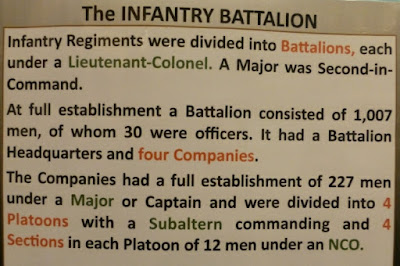Another view of the Great War: Exmouth Museum
Visitors
seeking local memories of the 1914-18 world conflict have only another six
weeks to go until the main season ends at Fairlynch on Sunday 27 September.
Our
Great War exhibition can be seen again briefly when the Museum re-opens during
the school half-term before finally being dismantled. But our neighbours in Exmouth – all
volunteers just as in Budleigh – staged their own Great War display and their
museum remains open until the end of October.
Exmouth is just a few miles along the coast from Budleigh Salterton. So it’s no surprise to find, from a rummage in the archives, that at least a dozen men associated with the Lower Otter Valley who died on active service during World War One also had links to the larger town.
As
at Fairlynch, there are photos of local men who served in the conflict.
Among
them is Private Arthur Palmer, pictured above, recorded as having died at the Battle of Loos on
25 September 1915. He’s described in Exmouth Museum’s ‘Faces of the Great War’
panel as living with his wife on Halsdon Road in the town. Born in East Budleigh, he is listed on the
war memorial in that village. But his
name appears also on Exmouth’s and Seaton’s!*
There’s a fine display of the medals won by some of these men.
Exmouth
Museum must have been delighted to be given by his widow the medal ribbons worn by the
noted WW1 flying ace Douglas Carbery MC, DFC (1894-1959). A British Artillery officer, he was credited with six aerial victories
while attached to the Royal Flying Corps and the Royal Air Force. He later returned to the artillery, and
commanded an anti-aircraft brigade during World War II, retiring with the rank
of brigadier.
Pride
of place in the Exmouth Museum display goes to the town’s two VCs.
Featured above is Flight
Sub-Lieutenant Reginald Warneford of the Royal Naval Air Service. He won his award
on 7 June 1915 for destroying a German airship, but died in a flying accident
ten days later. The epic tale of how he destroyed Zeppelin No 37 is well worth
a read.
Two years ago, Reginald Warneford’s name was in national
headlines after a government ruling that only British-born Victoria Cross recipients would be honoured with commemorative paving stones in their home towns, and
Warneford had been born in Darjeeling, India.
Warneford's own drawing of his downing of the Zeppelin
A
vigorous media campaign to reverse the ruling led to the laying of a special
memorial flagstone during a VC dedication service at the Strand Gardens,
Exmouth on Sunday 7 June 2015 – exactly 100 years after Warneford’s award-winning
mission.
There
are helpfully informative notices in Exmouth Museum’s exhibition about episodes
of the Great War such as the Gallipoli campaign...
... and even detailed explanations
of how such hierarchies as infantry battalions were organised.
Among
the wartime artefacts I noticed this tank crew mask looking like medieval chain
mail.
And
this vest pocket camera was
one of a best-selling folding camera series made by Kodak from 1912 to 1926.
Many remarkable photographs were taken by soldiers before the War Office issued
its instruction banning cameras from the trenches in March 1915.
A neatly crafted example of ‘trench art’ on display is this cribbage board,
made from a WW1 shell casing.
There’s
a lot more to see in Exmouth’s Great War display. Don’t miss it. For more information about the
Museum click on
*
Others included Major Reginald Elliott, Private Arthur Lake, Private George
Hooper, 2nd Lieutenant Alfred Carter, Major William Addington,
Private Bertram Coates, Private Norman Pengilley, Able Seaman Herman Hart, Boy 1st
class Ernest Hewett, Able Seaman Leslie Hewett, Lance Corporal Ralph Hewett,
Stoker Walter West and Seaman Thomas Troake.


















Comments
Post a Comment